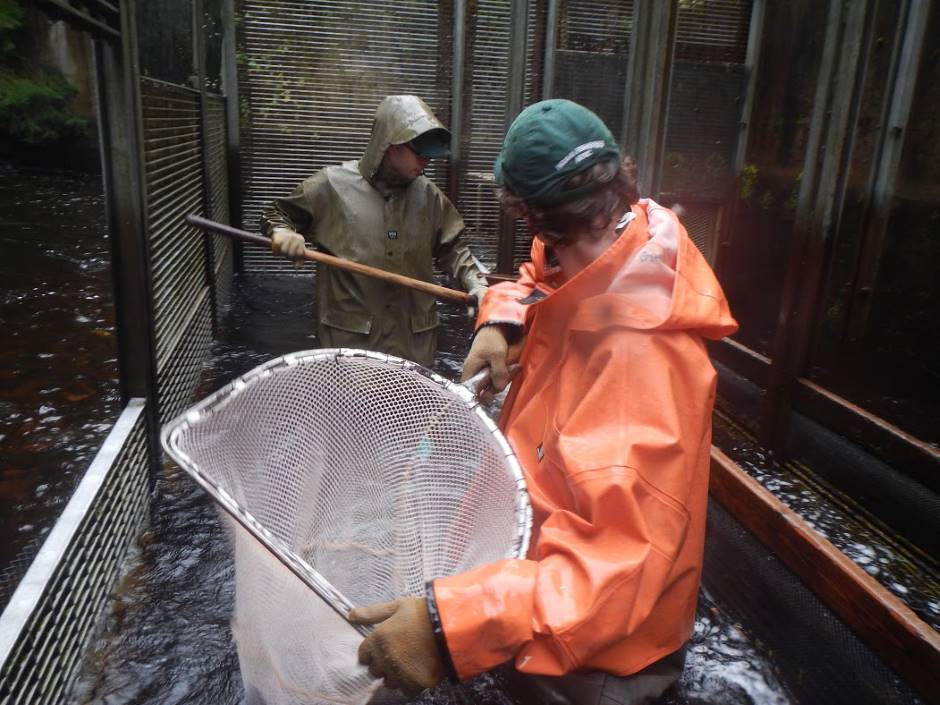Salmon Shifting Migration Habits Due to Climate Change
 Long-term salmon run data from weirs like this one helped show alarming shifts in migration timing. (Credit: Evan Barrientos)
Long-term salmon run data from weirs like this one helped show alarming shifts in migration timing. (Credit: Evan Barrientos)Migratory fish like salmon have long been traveling from their freshwater birth waters to the ocean and then returning to these lakes to spawn later in life. Unfortunately, recent changes in the climate have impacted these migration patterns, harming the population size of migratory salmon. As a keystone species—the loss of salmon would lead to dramatic changes in the ecological change.
Changes in Salmon Migration Habits
“When you see these really massive changes in [salmon] migration timing, it’s definitely something that made us all stop,” said Ryan Kovach, a fisheries research biologist for the U.S. Geological Survey. Kovach led a study in 2014 to determine what might be causing these changes in Southeast Alaska and what they could mean for the ecosystem on a larger scale. Their results were published online in Global Change Biology.
Due to climate change, many of the rivers salmon have spent centuries running have gotten warmer. This change has shifted the expected timing of the migration, occurring earlier in the year than usual for chum, coho, and pink salmon. Warmer water leads them to migrate sooner as the fish prefer cooler waters and can even suffer health issues in warmer temperatures.
However, young salmon are often not prepared for the colder ocean waters, which can also lead to disease and death in the smaller fish. Losing the young fish lowers the total population and means fewer adult salmon to contribute to the future population size.
Beyond water temperatures forcing salmon to migrate early, Kovach’s article theorized that water levels may also be contributing to the early move. Earlier snowmelt has led to lower summer streamflow in Alaska, and low streamflow can make upstream passage even more difficult—or downright impossible—for spawning salmon.
Migrating earlier saves them from too warm of waters and also ensures the fish hit the streams just as the snow melts, when streamflow is at its peak.
Conclusion
The changes will impact more than just salmon. Kovach explains, “There’s a clear link between salmon migration timing and the behavior of other species.” He continues, “We just don’t know what that impact is, yet.”
Many species, including humans, rely on salmon for food. Bears have long timed their salmon hunting for set times during the year. With earlier migration times, bears will need to start searching the streams earlier in the season. The presence of salmon also dictates the entire life cycle of some parasitic aquatic invertebrates.
Salmon are also deeply important to humans, representing an important food source and a major source of revenue since humans have built a huge industry on the commercial harvest of salmon in Alaska.
Understanding the importance of salmon and how their changes in migration patterns will impact other facets of the ecosystem is essential to supporting future conservation efforts. “We need to get a better handle on this if we really want to make sure that we can adequately sustain these fish into the future,” states Kovach. “It behooves us to dig deeper and figure out what it is that’s driving these strong changes.”


0 comments